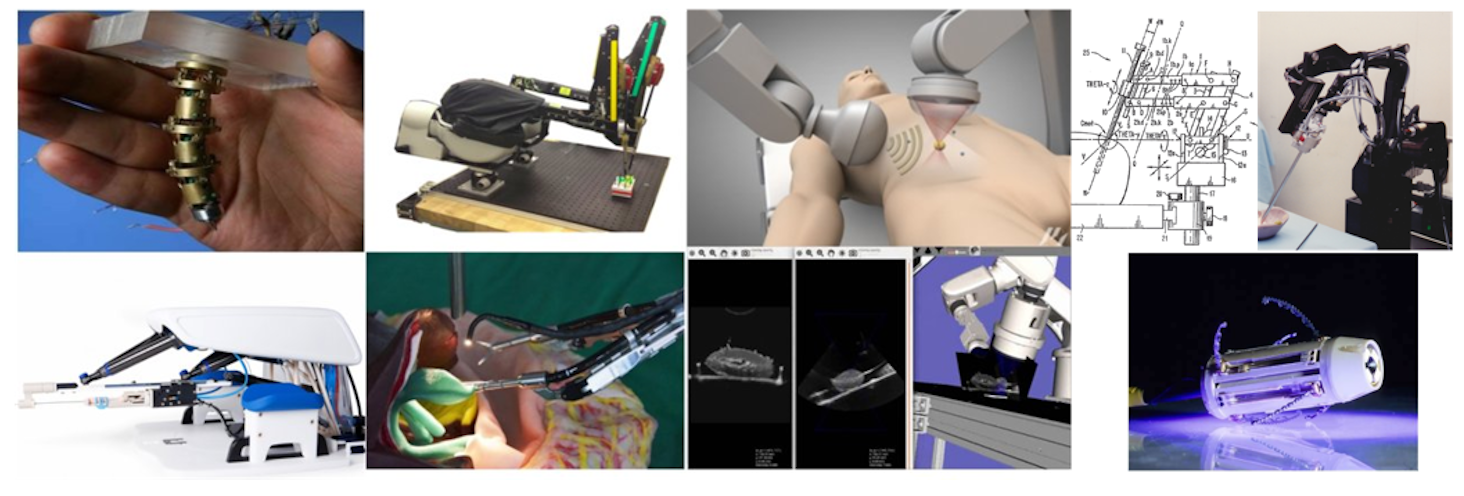Newsletters
Nov 9th, 2021 | May 23rd, 2021 | Feb 26th, 2021 | Dec 23th, 2020 | Jul 24th, 2020
Scope
The impact of robotic systems and devices on surgery in the next 25 years promises to be as comparable to that of manufacturing robots on industrial production over the past 25 years. By extending human surgeons' ability to plan and carry out surgical interventions more accurately and less invasively, surgical robotic systems can address a vital international need to greatly reduce costs, improve clinical outcomes, and improve the efficiency of health care delivery.

The field of medical robotics is relatively new, roughly at the same stage of maturity as manufacturing robotics was in 1980. The first surgical uses of robots occurred in the late 1980's, and the first international workshop devoted to medical robots was held in 1988 under IARP sponsorship. Since then, the field has grown from a relative handful of practitioners to a well-recognized sub-discipline within the robotics community, with multiple sessions or tracks at robotics conferences, clinical meetings, and specialized workshops. However, there is plenty of room to overcome the limitations of current surgical robotics technologies and to go beyond those technologies.
One challenge in developing robots for a particular domain is maintaining an appropriate balance between specialization to make the system well-adapted to a particular purpose and still general enough to be useful for a broad set of applications. Of course, this dilemma is not restricted to surgical applications alone; it is ubiquitous in all of robotics. Seeking the right balance while using surgical applications as a focus can be an especially productive way to advance robotics generally. Further, this emerging sub-discipline within robotics offers researchers an especially gratifying way to see how the fruits of our research can directly enhance people's lives.
The impact of Surgical Robotics and the interest of RAS members in this field have been demonstrated in the last few years by several successful events organized virtually at all Robotics Conferences, and by the successful Special Issues of the IEEE RAS Transactions and Magazine. Today, a strong need is felt to make further progress that would launch Surgical Robotics beyond current achievements and further disseminate their use and increase their acceptance. Research efforts are needed to: improve the simplicity of use and thus the medical acceptance of current robots (semi-autonomous and teleoperated) for minimally invasive surgery; design new mechatronic hand-held tools capable of augmenting the performance of surgeons; develop new endoscopic robots; investigate new avenues of application in micro and nano surgery, including cell surgery, and so forth.
For all the above reasons, a Technical Committee devoted to address the many new and open scientific and technical challenges of Surgical Robotics is important. The new Technical Committee could increase the momentum of this growing research area; help focusing research activities within RAS; establish links with other technical communities within IEEE (such as EMBS, and others) and outside (for example the communities of surgeons and of economists interested in the acceptance of surgical robotics); create relations with industry.
The Technical Committee on Surgical Robotics will aim at fostering the exchanges among surgical robotics researchers, through scientific events and publications, at favoring the discussion on the technical and applicative problems, through meetings and Internet forums, and at providing researchers with helpful tools for their activity. The Technical Committee will actively work to organize Workshops and Tutorials at RAS Conferences, such as ICRA and IROS, and at other RAS-sponsored meetings; to organize dedicated conferences, and to promote special conference sessions and special issues of international Journals.

